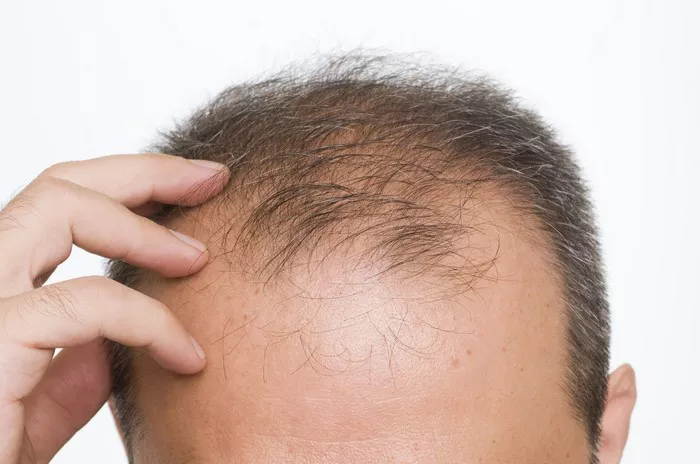Alopecia areata is a dermatological condition characterized by the sudden loss of hair in well-defined patches, often resulting in unpredictable and distressing patterns of hair loss. While the exact cause of alopecia areata is not fully understood, researchers have made significant strides in unraveling the complex factors that contribute to this autoimmune disorder. In this article, we will explore the main causes of alopecia areata, delving into genetic predispositions, immune system responses, and environmental triggers that play a role in the onset and progression of this condition.
Understanding Alopecia Areata: A Brief Overview
Alopecia Areata Defined: Alopecia areata is an autoimmune disorder in which the immune system mistakenly attacks hair follicles, leading to hair loss. It can affect individuals of any age, gender, or ethnic background, and its exact cause remains a subject of ongoing research.
Patterns of Hair Loss: The characteristic presentation of alopecia areata involves the sudden appearance of round or oval patches of hair loss on the scalp or other areas of the body. In some cases, the condition may progress to more extensive hair loss.
Genetic Predisposition: The Influence of Family History
Familial Connections: Genetic factors play a significant role in the development of alopecia areata. Individuals with a family history of autoimmune conditions or alopecia areata are at a higher risk of developing the disorder.
Specific Genetic Markers: Research suggests that certain genetic markers may be associated with an increased susceptibility to alopecia areata. Understanding these genetic factors can provide valuable insights into the underlying mechanisms of the condition.
The Immune System’s Role: Autoimmunity Unleashed
Autoimmune Response: Alopecia areata is fundamentally an autoimmune disorder, wherein the body’s immune system mistakenly targets its own tissues. In this case, the immune system attacks the hair follicles, disrupting the normal hair growth cycle.
T-Cells and Cytokines: Specific immune cells, particularly T-cells, are implicated in the attack on hair follicles. The release of inflammatory cytokines further contributes to the destruction of follicular structures.
Environmental Triggers: Unmasking the Culprits
Stress as a Trigger: Stress, whether physical or emotional, is often cited as a potential trigger for alopecia areata. Stressful events, such as major life changes or trauma, may contribute to the onset or exacerbation of the condition.
Viral Infections: Some researchers suggest a potential link between certain viral infections and the development of alopecia areata. The exact mechanisms through which viruses may trigger the autoimmune response are still being explored.
Environmental Factors: Exposure to certain environmental factors, such as pollutants or toxins, is theorized to play a role in the development of alopecia areata. However, specific causal relationships require further investigation.
Associated Conditions: Exploring Connections
Other Autoimmune Disorders: Individuals with alopecia areata may have an increased risk of developing other autoimmune conditions, such as thyroid disorders, rheumatoid arthritis, or vitiligo. Understanding these associations can provide a more comprehensive view of the disorder.
Atopic Dermatitis and Allergies: Some studies suggest a potential link between atopic dermatitis (eczema), allergies, and the development of alopecia areata. The intricate interplay between immune responses in these conditions requires further exploration.
Diagnosis and Prognosis: Navigating the Uncertainty
Diagnostic Challenges: Diagnosing alopecia areata involves clinical evaluation, including a thorough examination of the affected areas and, in some cases, a skin biopsy. However, the unpredictable nature of the condition poses challenges in terms of accurate diagnosis and prognosis.
Variable Course: The course of alopecia areata varies among individuals. Some may experience spontaneous regrowth of hair, while others may have recurrent episodes of hair loss. Predicting the progression of the disorder remains a clinical challenge.
Treatment Approaches: Addressing the Root Causes
Topical Treatments: Corticosteroid creams or ointments may be prescribed to reduce inflammation and promote hair regrowth in localized cases of alopecia areata.
Intralesional Corticosteroid Injections: For more extensive hair loss, injections of corticosteroids directly into the affected areas may be recommended to stimulate hair regrowth.
Immunomodulatory Therapies: Medications that modulate the immune system, such as JAK inhibitors, have shown promise in treating alopecia areata. Ongoing research is exploring the efficacy and safety of these therapies.
Conclusion
Alopecia areata, characterized by the sudden and unpredictable loss of hair, remains a challenging condition for both individuals affected by it and healthcare professionals seeking effective treatments. While the exact cause is not fully elucidated, a combination of genetic predisposition, immune system dysfunction, and environmental triggers contributes to the onset and progression of this autoimmune disorder. As research advances, a deeper understanding of the interconnected factors influencing alopecia areata may pave the way for more targeted and effective treatments. In the meantime, a comprehensive and individualized approach, considering both genetic and environmental factors, remains crucial in managing and addressing the complexities of alopecia areata.

